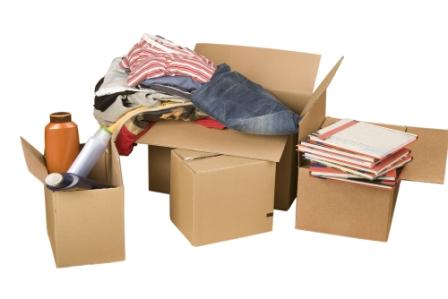6 Things Not Worth Packing in a Move
by Jackie Heath on Jul 17, 2014When moving, the less you move the more time, energy and money you save. Here are 6 types of items that you should not move with you in order to save money, space and energy on your move.
 One of the best ways to reduce your moving costs and avoid overtaxing yourself is to know what’s worth packing and what’s better to donate or throw away. Whether moving long distance or locally, the less you move the more time, energy and money you save.
One of the best ways to reduce your moving costs and avoid overtaxing yourself is to know what’s worth packing and what’s better to donate or throw away. Whether moving long distance or locally, the less you move the more time, energy and money you save.
Here’s what we recommend you set aside:
1. Heavy, Worn-Down Items of Furniture: If it’s an antique or has sentimental value, by all means keep the furniture and make sure it’s well protected on the move. However, if it’s wearing down and you’ve been considering a new one anyway, now’s an ideal time to toss it out. Items like dining room furniture, pianos, couches, and dressers are usually the heaviest (and therefore most expensive) items to move. If yours isn’t in good repair, it might end up being more cost-effective to donate or sell it and buy a new one when you arrive.2. Firewood and Outdoor Items: Firewood, wood pellets, outdoor patio furniture, potted plants…these types of items tend to weigh down a moving truck and cost more to move than they do to purchase brand new.
3. Unattractive Artwork: Transporting artwork requires careful packing and plenty of room in the moving van. If you’ve been unsure about that oversized poster or a heavily framed landscape that’s about four decades out of date, it might be a good idea to earmark these items for donation.
4. Books and CDs: Books are often the heaviest items in a house, and are therefore the most expensive to move. If you have a lot of books, CDs, DVDs, and other content, you may want to consider going digital and transporting them that way. You can also go through and purge any music or books you no longer use regularly.
5. Canned and Frozen Foods: It’s rarely a good idea to transport food to or from a new home. Canned goods weigh more than they’re worth, and frozen foods can spoil along the way. Start early and begin using these items up in the weeks leading up to moving day. If you run out of time before you consume these goods consider donating them to Move for Hunger an organization we work with.
6. Clothes that Don’t Fit: Moving is an ideal time to go through your closets and get rid of items you and your family have outgrown. More than anything, a move is an ideal time to start fresh and purge the closets full of belongings you haven’t had the time (or energy) to toss out. Kids’ clothes and toys they’ve outgrown are especially bulky.
No matter what you end up setting aside, make sure you take some time to decide if you want to throw items out, donate them, or put them up for sale in a garage sale. Several trips to the dump could end up costing you money in the end, while a garage sale could put cash in your pocket. As long as you start planning your move early, you should have plenty of time to figure out what goes and what stays behind.